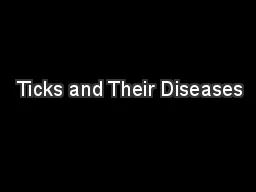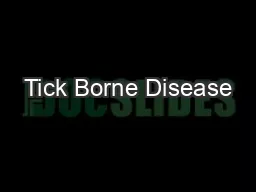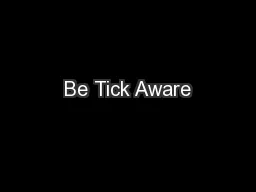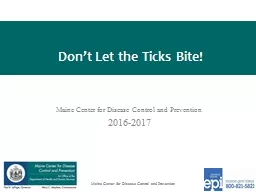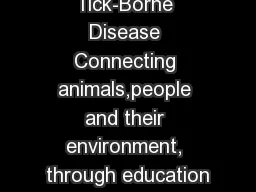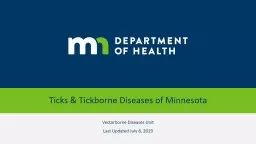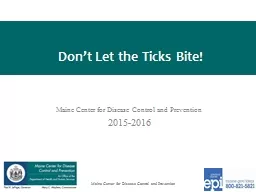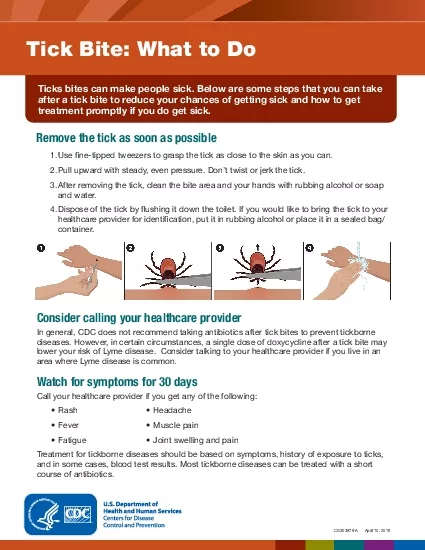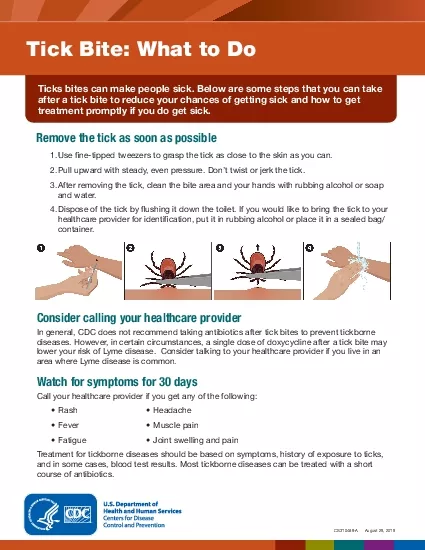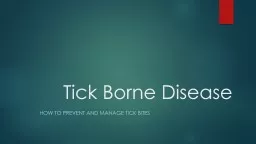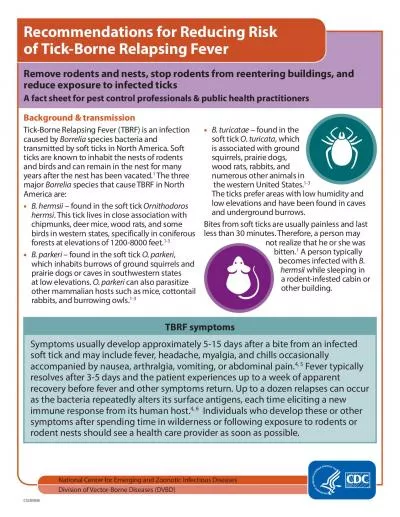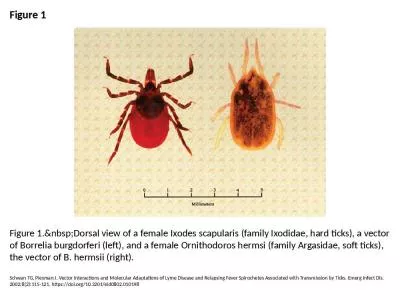PPT-Ticks and Their Diseases
Author : stefany-barnette | Published Date : 2020-04-06
Maureen Brophy MPH PhD Student Outline What are ticks Biology Ecology Disease transmission Rocky Mountain spotted fever What is a tick Arachnids not insects Related
Presentation Embed Code
Download Presentation
Download Presentation The PPT/PDF document " Ticks and Their Diseases" is the property of its rightful owner. Permission is granted to download and print the materials on this website for personal, non-commercial use only, and to display it on your personal computer provided you do not modify the materials and that you retain all copyright notices contained in the materials. By downloading content from our website, you accept the terms of this agreement.
Ticks and Their Diseases: Transcript
Download Rules Of Document
" Ticks and Their Diseases"The content belongs to its owner. You may download and print it for personal use, without modification, and keep all copyright notices. By downloading, you agree to these terms.
Related Documents

